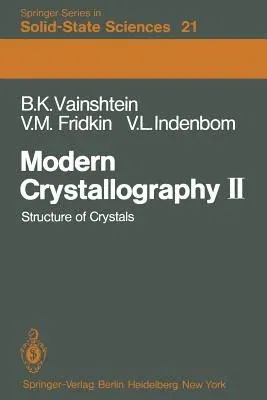Boris K Vainshtein
(Author)Modern Crystallography II: Structure of Crystals (Softcover Reprint of the Original 1st 1982)Paperback - Softcover Reprint of the Original 1st 1982, 19 January 2012

Qty
1
Turbo
Ships in 2 - 3 days
In Stock
Free Delivery
Cash on Delivery
15 Days
Free Returns
Secure Checkout
Part of Series
Springer Solid-State Sciences
Part of Series
Springer Series in Solid-State Sciences
Print Length
436 pages
Language
English
Publisher
Springer
Date Published
19 Jan 2012
ISBN-10
3642966217
ISBN-13
9783642966217
Description
Product Details
Book Edition:
Softcover Reprint of the Original 1st 1982
Book Format:
Paperback
Country of Origin:
NL
Date Published:
19 January 2012
Dimensions:
23.11 x
15.49 x
2.54 cm
ISBN-10:
3642966217
ISBN-13:
9783642966217
Language:
English
Location:
Berlin, Heidelberg
Pages:
436
Publisher:
Weight:
616.89 gm

